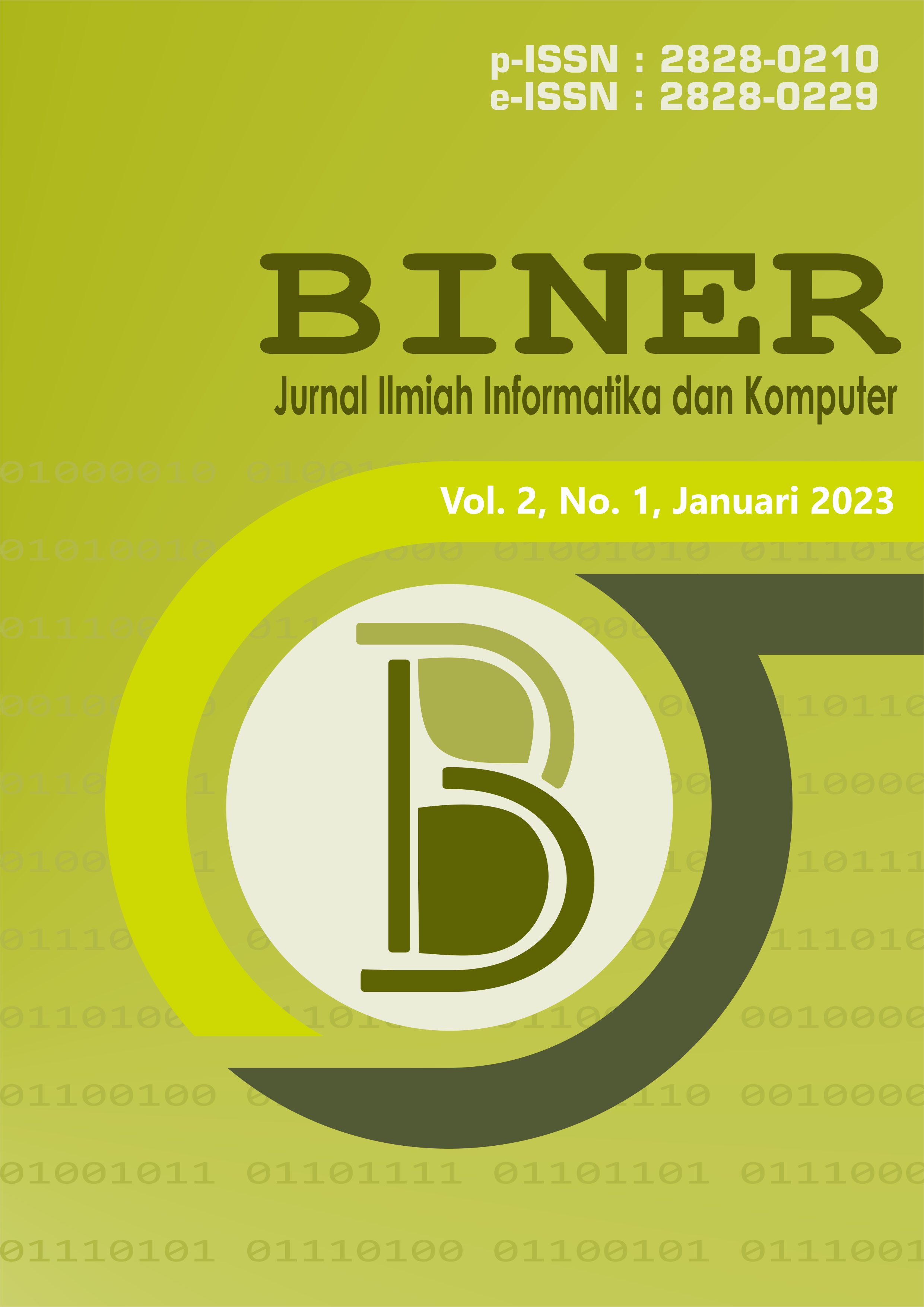BUSINESS PROCESS MODELLING PADA DIVISI PUBLIC RELATION PERGURUAN TINGGI
DOI:
https://doi.org/10.32699/biner.v2i1.3625Keywords:
Business Prosess, BPMN, Public RelationAbstract
Public relations division is part of a company or organization that is responsible for preparing special communication plans with various media in an effort to build an image and good and beneficial relations between the organization and the public. Some of these public relations jobs are related to public communications such as managing incoming and outgoing mail. This research was conducted to design new business processes in the development of current business processes. Where the problem to be solved is a problem in terms of time. The business process flow will be described with the Business Process Modeling And Notation (BPMN) modeling technique. The research was carried out in several stages, namely data collection, information, literature study, analysis of the old process flow and business flow analysis of the recommendation process. Based on the research conducted, it was found that the new business process flow can speed up the processing time for the completion of incoming and outgoing letters. With the time analysis of this business process, the stages of work on the tasks of each section can be known in the form of time estimates that accelerate the business process of managing letters in the public relation division.
Downloads
References
[2] L. Setiyani, G. T. Liswadi, and A. Maulana, “Proses Pengembangan Proses Bisnis Transaksi Penjualan pada Toko Erni Karawang,” J. Interkom J. Publ. Ilm. Bid. Teknol. Inf. dan Komun., vol. 16, no. 4, pp. 39–45, 2022.
[3] A. T. Helmi, I. Aknuranda, and M. C. Saputra, “Analisis Dan Pemodelan Proses Bisnis Menggunakan Business Process Improvement (BPI) Pada Lembaga Bimbingan Belajar (Studi Kasus : Lembaga Bimbingan Belajar Prisma),” J. Pengemb. Teknol. Inf. dan Ilmu Komput. Univ. Brawijaya, vol. 2, no. 10, pp. 4184–4191, 2018.
[4] K. Asmar, A. F. Zubaidi, T. Y. Abiasa, and R. Christianus, “Analisis Proses Bisnis pada Aplikasi ISOMAN menggunakan Business Process Model and Notation,” JIS (Jurnal Ilmu Siber), vol. 1, no. 3, pp. 33–38, 2022.
[5] R. Hidayat, “Peran Public Relations Dalam Mempengaruhi Konten Media,” Interak. J. Ilmu Komun., vol. 5, no. 1, p. 90, 2017.
[6] L. Yuliana, “Analisis Perencanaan Penjualan Dengan Metode Time Series (Studi Kasus Pada Pd. Sumber Jaya Aluminium),” J. Mitra Manaj., vol. 3, no. 7, pp. 780–789, 2019.
[7] K. Kulsum, H. Mubarak, E. Febianti, Y. Muharni, P. B. Katili, D. L. Trenggonowati, and A. Gunawan, “Upaya Peningkatan Produktivitas menggunakan Perancangan Pemodelan Business Process Modelling Notation (BPMN),” J. Ind. Serv., vol. 6, no. 2, p. 198, 2021.
[8] Mahendrawathi ER, Business Process Management : Konsep dan Implementasi, 1st ed. Penerbit Andi, 2018.
[9] K. Ismanto, Firman Hidayah, “Pemodelan Proses Bisnis Menggunakan Business Process Modelling Notation ( BPMN ),” J. Ris. dan Konseptual, vol. 5, pp. 69–76, 2020.
[10] L. Setiyani and R. Rachmawati, “Pemodelan Business Process Improvement Aplikasi Antrian Pengambilan Stnk (Studi Kasus : Kantor Kejaksaan Karawang),” JUST IT J. Sist. Informasi, Teknol. Inf. dan Komput., vol. 11, no. 2, p. 1, 2021.
Downloads
Published
Issue
Section
License

This work is licensed under a Creative Commons Attribution-ShareAlike 4.0 International License.
An author who publishes in this Journal agrees to the following terms:
- Author retains the copyright and grants the journal the right of first publication of the work simultaneously licensed under the Creative Commons Attribution-ShareAlike 4.0 License that allows others to share the work with an acknowledgement of the work's authorship and initial publication in this journal
- Author is able to enter into separate, additional contractual arrangements for the non-exclusive distribution of the journal's published version of the work (e.g., post it to an institutional repository or publish it in a book) with the acknowledgement of its initial publication in this journal.
- Author is permitted and encouraged to post his/her work online (e.g., in institutional repositories or on their website) prior to and during the submission process, as it can lead to productive exchanges, as well as earlier and greater citation of the published work (See The Effect of Open Access).















